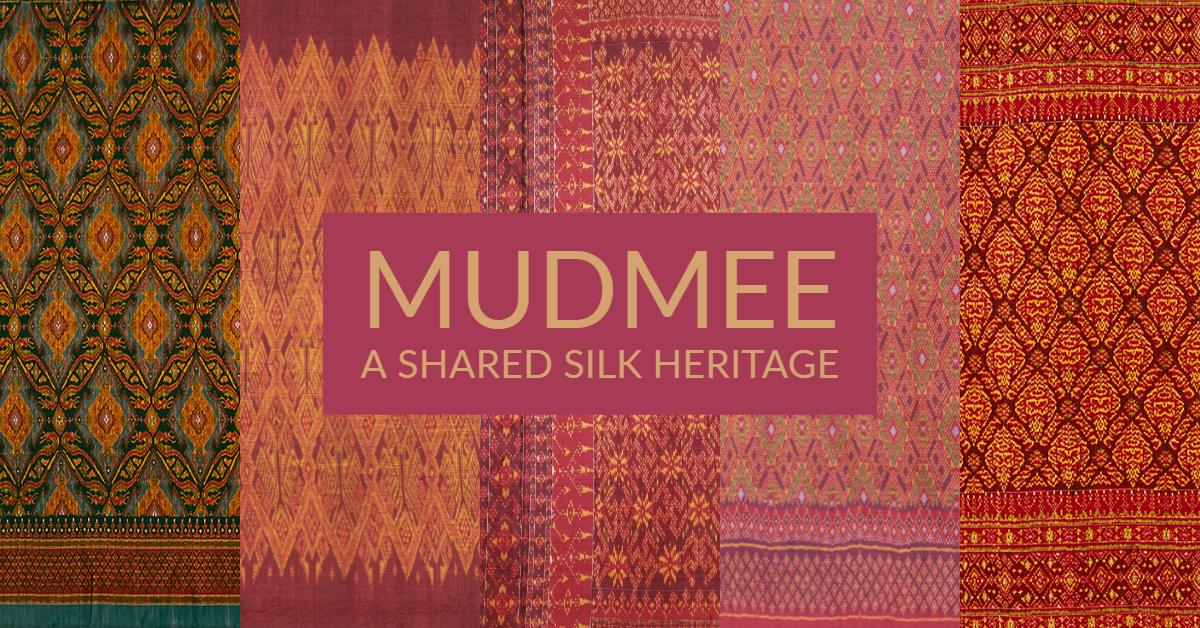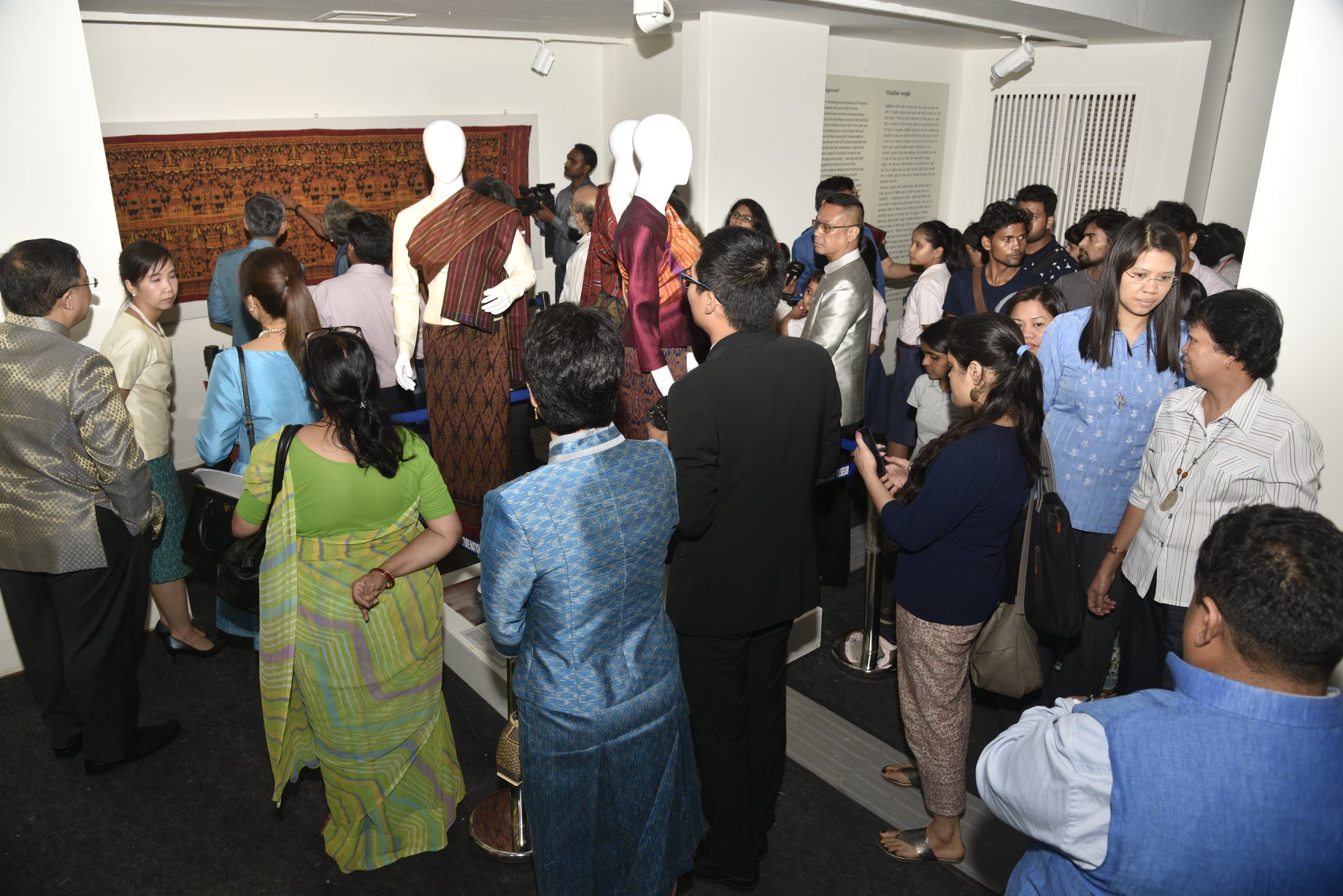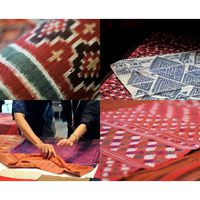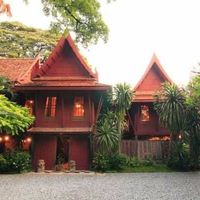Exhibition: "Mudmee: A Shared Silk Heritage" | India

 Between 10 August and 25 September, the National Museum of India, in New Delhi, an ASEMUS member, presents an exhibition entitled "Mudmee: A Shared Silk Heritage". The exhibition is organised by the Royal Thai Embassy in New Delhi in collaboration with the National Museum of India, and the Thai Khadi Research Institute of Thammasat University.
"Mudmee: A Shared Silk Heritage" features around 50 pieces of old and new Mudmee silk from Thailand, and a few dresses and accessories made from Thai Mudmee silk, along with a selection of Indian Ikat silk from the collection of the National Museum, New Delhi.
Thailand and India have shared a long history of textiles. Various types of textiles were imported from India to Siam for the local market and royal court use since the Ayutthaya period (14th - 18th Century) including block-printed or painted cotton (chintz) from Masulipatnam, silk brocade from Banaras, and patola (double ikat silk) from Gujarat. The Siamese had commissioned Indian-made textiles with Siamese royal patterns exclusively for the royal court, usually with the flame motifs, as seen in traditional Thai paintings and architecture. At the same time, textiles with simplified or mixed patterns of Indian taste were produced for the general Siamese public. These Indian-Thai patterns and motifs can still be seen in the Mudmee Silk in Thailand today.
The exhibition was inaugurated on 10 August 2018 by H.E. Mr. Chutintorn Gongsakdi, Ambassador of Thailand; and Dr. B. R. Mani, Director General, National Museum, New Delhi, with a special lecture and gallery walk by Dr. Anucha Thirakanont, Director of Thai Khadi Research Institute and Curator of the Exhibition.
For additional information about "Mudmee: A Shared Silk Heritage", please visit http://nationalmuseumindia.gov.in/exhibitions.asp?lk=ex1 and https://www.facebook.com/events/818968798307021
Between 10 August and 25 September, the National Museum of India, in New Delhi, an ASEMUS member, presents an exhibition entitled "Mudmee: A Shared Silk Heritage". The exhibition is organised by the Royal Thai Embassy in New Delhi in collaboration with the National Museum of India, and the Thai Khadi Research Institute of Thammasat University.
"Mudmee: A Shared Silk Heritage" features around 50 pieces of old and new Mudmee silk from Thailand, and a few dresses and accessories made from Thai Mudmee silk, along with a selection of Indian Ikat silk from the collection of the National Museum, New Delhi.
Thailand and India have shared a long history of textiles. Various types of textiles were imported from India to Siam for the local market and royal court use since the Ayutthaya period (14th - 18th Century) including block-printed or painted cotton (chintz) from Masulipatnam, silk brocade from Banaras, and patola (double ikat silk) from Gujarat. The Siamese had commissioned Indian-made textiles with Siamese royal patterns exclusively for the royal court, usually with the flame motifs, as seen in traditional Thai paintings and architecture. At the same time, textiles with simplified or mixed patterns of Indian taste were produced for the general Siamese public. These Indian-Thai patterns and motifs can still be seen in the Mudmee Silk in Thailand today.
The exhibition was inaugurated on 10 August 2018 by H.E. Mr. Chutintorn Gongsakdi, Ambassador of Thailand; and Dr. B. R. Mani, Director General, National Museum, New Delhi, with a special lecture and gallery walk by Dr. Anucha Thirakanont, Director of Thai Khadi Research Institute and Curator of the Exhibition.
For additional information about "Mudmee: A Shared Silk Heritage", please visit http://nationalmuseumindia.gov.in/exhibitions.asp?lk=ex1 and https://www.facebook.com/events/818968798307021
Similar content
from - to
05 Nov 2013 - 09 Nov 2013
16 May 2014
26 Jun 2014
posted on
04 Jul 2011
from - to
15 Sep 2011 - 23 Oct 2011
07 Oct 2014


